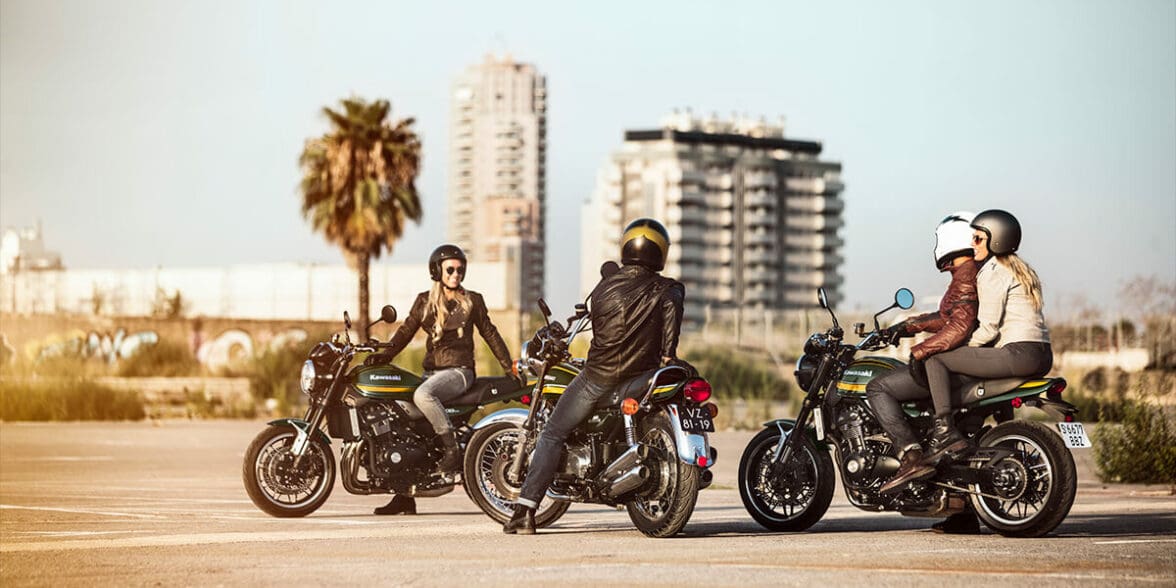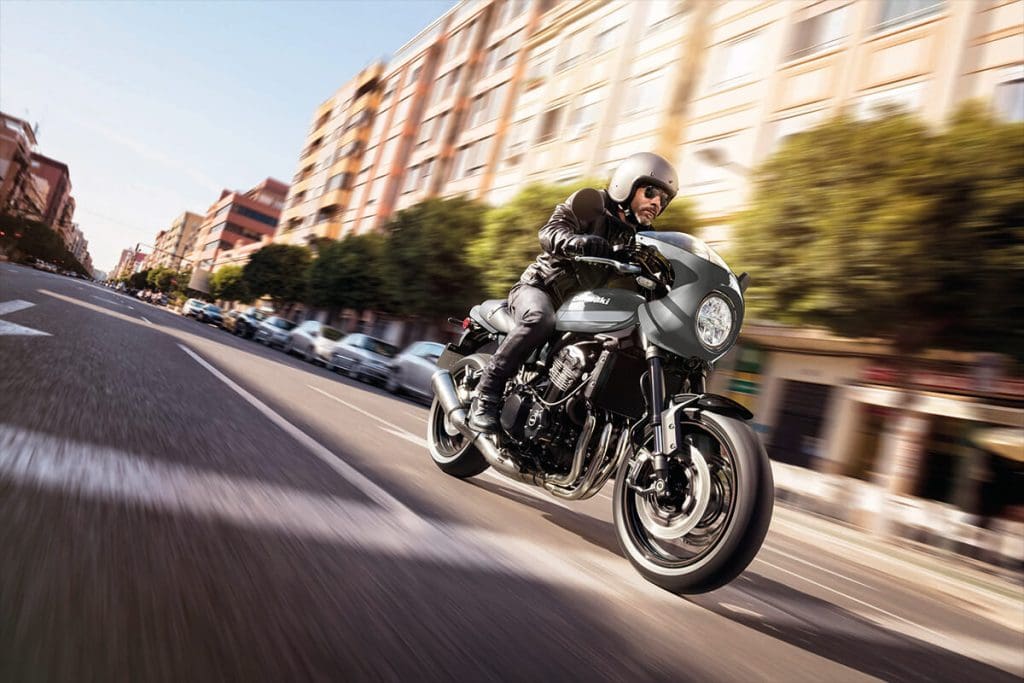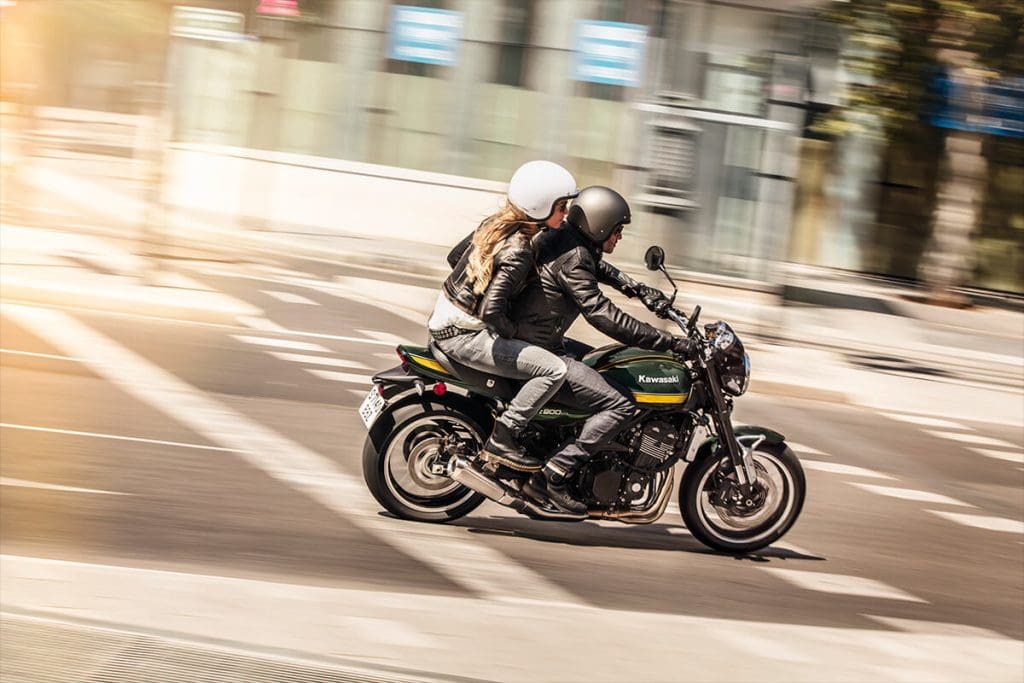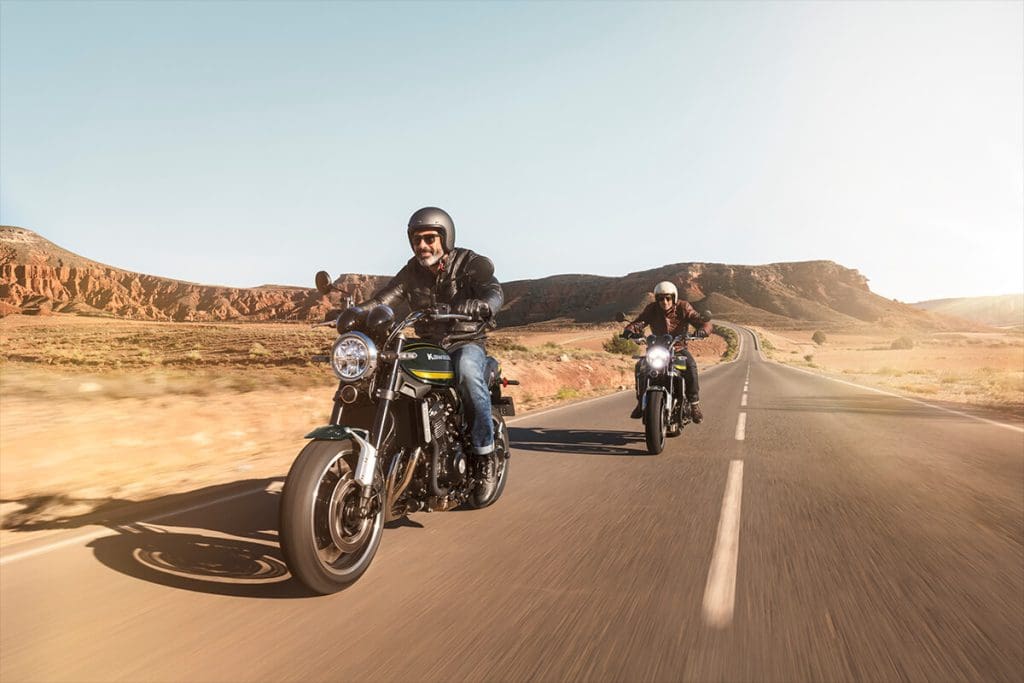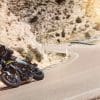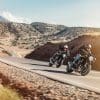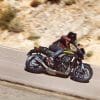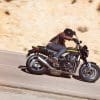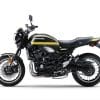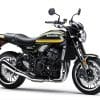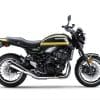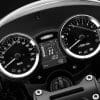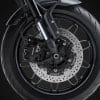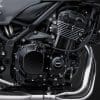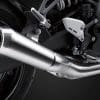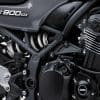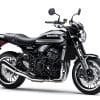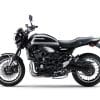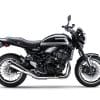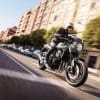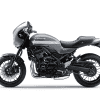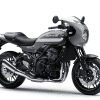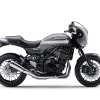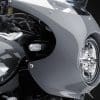The 2021 Kawasaki Z900RS (and Cafe): Old School, New Cool
Contents
Kawasaki has done a brilliant homage to the iconic Z1, with the styling of the Z900RS. We have seen many attempts to bring the old school cool into modern machines, often badly by the cager crowd (think Chevy SSR or Ford retro Thunderbird), but this Japanese-made modern classic really hits the mark.
Borrowing a few parts from its stablemate Z900 in the 2021 Kawasaki lineup, the Z900RS is its own animal. The 948cc mill has been retuned for better power in the lower RPM range. In Z900RS guise it cranks out 111 HP at 8500 RPM and 72 lb-ft of torque at 6500 RPM. Not meant to be a high revving sportbike, this Kawasaki wants a little more relaxed ride where you can vibe with the melodic exhaust note, but be confident in the power delivery at any point.
Hiding between the classic bullet gauges is a multi-function LCD screen, just another example of how well Kawasaki has blended old with new. A teardrop tank and well-padded slab seat merge with modern tech like the adjustable 41mm inverted front fork, ABS brakes, and Assist & Slipper clutch.
One last choice for the Z900RS owner, to Cafe or not Cafe? This is the question, well at least for the Americans. Oddly Canada is not bringing in the Cafe model. Such a shame, the added front cowl is a gorgeous throwback piece of art and function.
A final interesting tidbit on the Z900RS, for 2021 Canadians get the bike in Ebony, and those in the USA will have Candytone Green. The USA spec Cafe model comes in Pearl Storm Gray.
The 2021 Kawasaki Z900RS starts at $11,299 USD / $13,499 CAD.
The 2021 Kawasaki Z900RS Cafe starts at $11,899 USD.
On this page: we’ve curated specs, features, news, photos/videos, etc. so you can read up on the new 2021 Kawasaki Z900RS in one place.
Model Overview
General Info
- Price: $11,299 USD / $13,499 CAD / Cafe – $11,899 USD
- Key Features:
-
- Classic Modern styling
- ABS Braking
- Assist And Slipper Clutch
- Tuned Exhaust Note
Main Specs
- Engine: 948cc, liquid-cooled, 4-stroke DOHC 16-valve in-line four
- Power: 80.3 kW (111 hp) @ 8500 RPM
- Torque: 72.7 lb-ft (98.6 NM) @ 6,500 RPM
- Wet Weight: 214 kg (472 lb)
- Seat Height: 800 mm (31.5 in)
2021 Kawasaki Z900RS Specifications
ENGINE |
||
| Engine | 948cc, liquid-cooled, 4-stroke DOHC 16-valve in-line four | |
| Power | 111 hp | |
| Bore x Stroke | 73.4 x 56.0mm | |
| Compression Ratio |
11.8:1
|
|
| Fuel System | DFI® with 36mm Keihin throttle bodies | |
| Starter | Electric | |
| Lubrication | ||
DRIVETRAIN |
||
| Clutch | ||
| Transmission | 6-speed, return shift | |
| Final Drive | Sealed chain | |
CHASSIS |
||
| Suspension Front | Inverted telescopic fork with (13-way) adjustable compression and rebound (11-way) damping, spring preload (15-turn)/4.7 | |
| Suspension Rear | Horizontal back-link swingarm with stepless adjustable rebound damping and spring preload/5.5 in | |
| Brakes Front | Dual 300mm disc ABS | |
| Brakes Rear |
Single 250mm disc ABS
|
|
| Tires Front | 120/70 ZR17 | |
| Tires Rear | 180/55 ZR17 | |
| Fuel Tank Capacity | 4.5 gal | |
| Color |
Candytone Green
|
|
ELECTRICAL |
||
| Ignition | TCBI with electronic advance | |
| Spark Plugs | ||
| Headlight | LED | |
| Tail Light | LED | |
DIMENSIONS |
||
| Overall Length | 83.1 in | |
| Overall Width | 34.1 in | |
| Overall Height | 46.5 in | |
| Wheelbase | 57.9 in | |
| Ground Clearance | 5.1 in | |
| Seat Height | 32.9 in | |
| Curb Weight | 474.1 lb | |
WARRANTY |
||
| Warranty | 12 Month Limited Warranty | |
| Kawasaki Protection Plus | 12 / 24 / 36 / 48 months | |
2021 Kawasaki Z900RS Features
Assist & Slipper Clutch
Under normal operation, the assist cam functions as a self-servo mechanism, pulling the clutch hub and operating plate together to compress the clutch plates. This allows the total clutch spring load to be reduced, resulting in a lighter clutch lever feel when operating the clutch.
When excessive engine braking occurs – as a result of quick downshifts (or an accidental downshift) – the slipper cam comes into play, forcing the clutch hub and operating plate apart. This relieves pressure on the clutch plates to reduce back-torque and helps prevent the rear tire from hopping and skidding. This race-style function is particularly useful when sport or track riding.
Dual Throttle Valves
On models with dual throttle valves, there are two throttle valves per cylinder: in addition to the main valves, which are physically linked to the throttle grip and controlled by the rider, a second set of valves, opened and closed by the ECU, precisely regulates intake airflow to ensure a natural, linear response. With the air passing through the throttle bodies becoming smoother, combustion efficiency is improved and power is increased.
Economical Riding Indicator
While effective vehicle speed and engine speed may vary by model, paying attention to conditions that cause the “ECO” mark to appear can help riders improve their fuel efficiency – a handy way to increase cruising range. Further, keeping fuel consumption low also helps minimize negative impact on the environment.
KTRC (Kawasaki Traction Control)
Less intrusive modes maintain optimum traction during cornering. Designed with sport riding in mind, they facilitate acceleration out of corners by maximizing forward drive from the rear wheel. And because Kawasaki’s sophisticated software bases its dynamic analysis on the chassis’ orientation relative to the track surface (rather than relative to a horizontal plane), it is able to take into account corner camber, gradient, etc., and adapt accordingly.
In the more intrusive modes (and for some models, in any mode), when excessive wheel spin is detected, engine output is reduced to allow grip to be regained, effectively enabling riders to negotiate both short, slippery patches (train tracks or manhole covers) and extended stretches of bad roads (wet pavement, cobblestone, gravel) with confidence.
Models equipped with IMU incorporate chassis-orientation feedback to offer even more precise management.
POWER MODES
Smartphone Connectivity
ABS (Anti-lock Brake System)
Horizontal Back-link Rear Suspension
A secondary benefit is that the shock unit is placed far away from exhaust heat. Because it is more difficult for heat from the exhaust system to adversely affect suspension oil and gas pressure, suspension performance is more consistent.
2021 Kawasaki Z900RS Photos
2021 Kawasaki Z900RS Videos
Links
Kawasaki Official Websites


